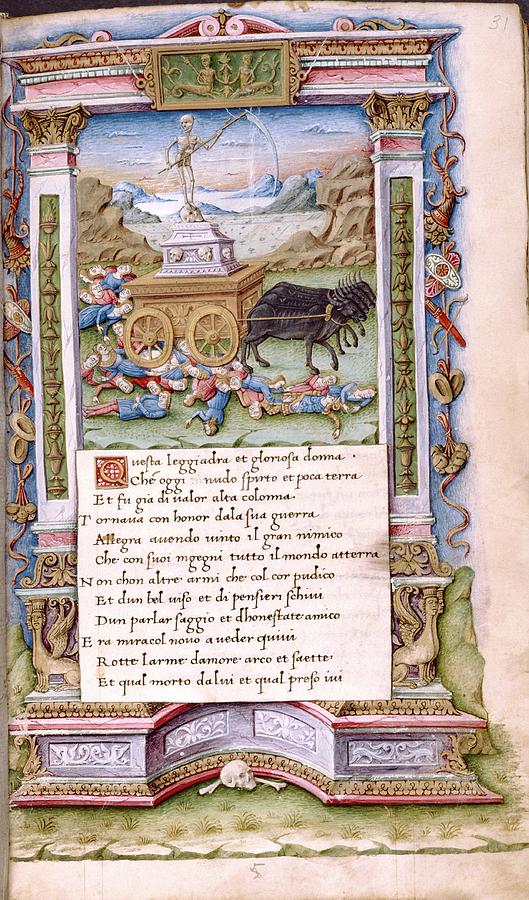



Their mission was to instill empathy in plague sufferers, who were thereafter connected with Christ, in order to praise and reward the heroic caretaker. The artist took on a new function in the centuries that followed. Art representing the Black Death in Europe was first interpreted as a warning of the wrath that the disease would bring to sinners and society. Throughout much of history, artists have represented epidemics from the perspective of the very religious context in which they lived. Sabatelli after himself See page for author, CC BY 4.0, via Wikimedia Commons The plague of Florence in 1348, as described in Boccaccio’s Decameron (‘Il decameron’). They have reinvented the disease as something less vague, mysterious, and terrible through these Medieval Bubonic Plague paintings. Their portrayal of the tragedies they observed has shifted dramatically over time, but the artists’ aim to depict the spirit of an epidemic has stayed consistent. 3.2 What Are the Specific Characteristics of Black Death Artwork?Īrtists have frequently attempted to make sense of the unpredictable damage brought on by the Medieval Bubonic plague, creating Black Plague art as a means of expressing their sorrows.3.1 Exactly What Effect Did the Black Plague have on Art?.2.10 Bonaparte Visiting the Plague Victims of Jaffa (1804) by Antoine-Jean Gros.2.8 Human Fragility (1656) by Salvator Rosa.2.7 The Plague at Ashdod (1630-1631) by Nicolas Poussin.15th Century) by Giacomo Borlone de Buschis 2.5 The Triumph of Death with the Dance of Death (c.2.4 Saint Sebastian Interceding for the Plague Stricken (1497-1499) by Josse Lieferinxe.2.3 Tournai Citizens Burying the Dead During the Black Death (c.2.1 Madonna of Humility (1345-1350) by Guariento di Arpo.1.3 The Emergence of Plague Artworks and the Black Death Paintings.1.2 What Was the Medieval Bubonic Plague?.1.1 An Introduction to Black Plague Art.You can also read more about the painting above on the Museo del Prado’s website. Now that the holiday season is upon us, I hope you’ll break up your shopping trips with a visit to the exhibition Florence at the Dawn of the Renaissance: Painting and Illumination, 1300–1350, where you’ll encounter 95 stunning objects made in Florence at that time. Also, check out the exhibition store both on-site and online for the perfect Florence-themed gifts for family and friends. In the first half of the 14th century, Florentine patrons commissioned huge amounts of art with a variety of goals: decorating a family chapel within newly built churches, supplying choir books or a laudario (book of hymns) for religious and lay ceremonies, or for facilitating private devotion. Some of the hottest brand names, so to speak, were paintings by Giotto and illuminated manuscripts by Pacino di Bonaguida (who also created panel paintings with innovative imagery).

In the years leading up to the Black Death of 1348, citizens of Florence could buy works of art from an artist’s workshop, which was often located on the ground level of a building on a street corner. In this painting by the Master of the Misericordia, we see Eloy, a seventh-century French saint, laboring in his goldsmith’s workshop. The saint diligently finishes making a golden saddle, while four assistants work at various tasks: two hammer metal objects, one stokes the fires with a bellows, and another adds finishing touches to a crucifix using a stylus or chisel. There’s been a lot of talk about shopping over the past few days, from Black Friday to Cyber Monday (now expanded to Cyber Week). In late medieval Florence, shopping-for art-was also all the rage. Tempera and gold leaf on panel, 13 3/4 x 15 3/8 in. Saint Eloy in His Goldsmith’s Workshop, about 1370, Master of the Misericordia.


 0 kommentar(er)
0 kommentar(er)
